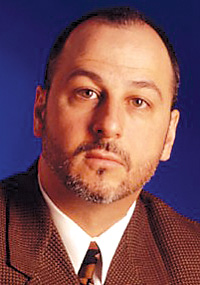The launch of Medicare Part D in January has given rise to speculation that the federal prescription drug coverage program heralds a new era in health care known as "consumerism." Combined with the government's endorsement of health savings accounts for employees, both programs are expected to give consumers more sway over the way health care is paid for and delivered, industry authorities contend.
An estimated 6 million people have some sort of consumer-directed health care and estimates peg that number exploding to 25 million next year. Fueling that dizzying growth is Part D, which requires beneficiaries to pay a fixed amount of out-of-pocket expenses for medications before coverage kicks in. The Bush Administration is also touting HSAs as a way for employers to shed health cost burdens by giving workers a fixed amount to spend at their own discretion.
Whether consumers' heavier fiscal responsibility translates to opportunities for HME providers is up for debate. On one hand, it means consumers will truly become health- care shoppers and view products more as merchandise than entitlements. On the other, the prime HME demographic is the elderly Medicare population that's more likely to opt for conventional coverage that pays for basic equipment.
Still, the consumerism trend will inexorably continue and expand, a development that HME providers should embrace, said retail expert Jack Evans.
"The message being sent to the public is that they have a choice in their home care, here's what insurance covers and here's what people should dig into their pockets for," said Evans, president of Malibu, Calif.-based Global Media Marketing. "There is a phenomenal growth trend of people wanting better products and willing to pay the difference. They're forgoing the reimbursable product for the upgrade."
Joe Lewarski agrees that consumerism will be a force in the future and that the HME industry is already starting to feel its effects.
"Look at diabetic supplies, for instance," said Lewarski, vice president of clinical and government affairs for Santa Barbara, Calif.-based Inogen. "I think sleep therapy is also primed for consumer influence--there are too many products and too much conflict between what physicians and patients want and what the payer will cover."
A system that gives consumers more control over their expenditures will also help them understand the true costs associated with health care, Lewarski added.
To be sure, the primary intent of consumer-directed health care is to correlate costs and utilization for the public, said Patrick Dunne, founder of Anaheim, Calif.-based Healthcare Productions.
"The basic premise is to make costs transparent so consumers can make the most appropriate choice according to their financial obligation," said Dunne, who has been documenting the trend. "Full disclosure of the convoluted billing process is a long time coming."
Still, some wonder whether consumerism will have a discernable impact on HME. Though he acknowledges the trend's ramifications for the acute care sector, Lou Slangen isn't convinced it will change the homecare system.
"For the immediate future at least, HME will be primarily driven by the payer," said Slangen, director of sales and marketing for Elyria, Ohio-based Invacare. "Will it make a difference 10 years from now? We'll cross that bridge when we come to it."




Comments